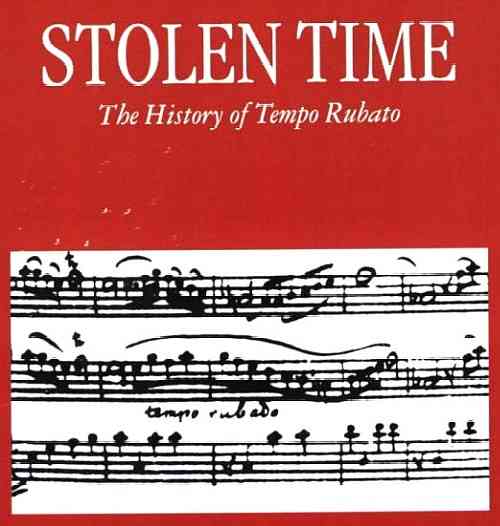
E very composer ... is entitled to ... [prescribe] a correct method according to his intentions, and thus to watch over the preservation of his own honor.”
— Abraham Birnbaum, quoted in Wolff et al., 1998 pp. 346-7.
I n his transcriptions, Bach never proceeded in a mechanical way; rather, he strove to give the arrangement an identity of its own by subjecting the model to further development and exhausting its potential. This often involved the addition of fresh contrapuntal parts, the alteration of detail and structural modification.”Akademie für Alte Musik Berlin (Akamus) performs this evening in Kansas City. Among the works on the program is Bach’s D minor Concerto, BWV 1052.
— Christoph Wolff.
There are all sorts of reasons for creating a transcription. Paying homage to the predecessor is one motive. Accomodating a particular instrumentation that happens to be available is another. Amplifying or extemporizing on historical themes is yet another. But in this piece one thing that strikes me is the focus on the personality—the personhood, the subjectivity, the existential situation—of the performers.

Agogic stresses (altered durations) and ‘stolen time’ are a way to create spontaneity. The appoggiaturas and anticipations steal time from the elements that they precede. And the improvisatory character of appoggiaturas alludes to individualism and ephemerality, as Richard Hudson says in his book, ‘Stolen Time’. Even the fingers’ dwelling on notes before releasing them borrows time, steals time.

Baroque experts maintain that ornamentation was just considered an aspect of the expression of the music, left properly to the performer’s discretion. That is, in general baroque composers weren’t obsessive about notating these embellishments explicitly—on account of the common musical language, a more homogeneous performance practice than existed before or since. Is BWV 1052 different from other baroque works in this regard?

Well, maybe. To me, there is in BWV 1052 a latitude for the anticipations that is especially large, and the notation provides no special clue to this. The anticipations in BWV 1052 can be played shorter than indicated or they can be played longer, without the risk of sentimentality or cliché that other pieces have. There’s a broad latitude, too, as to whether an anticipation can be slurred from the main note of the trill. There are instances where an anticipation can be both shortened and separated from the trill note by what’s called a ‘silence of anticipation’—détachè. These detachments naturally draw attention to the passage of time—what went before, what comes after, the ‘afterness’ enabled by the passage of a moment’s time. Whitespace.

The effect of this latitude is to convey a sense of aloneness—as when one realizes that the constraints that have cramped one’s style have been lifted, but one now has no particular idea of what to do. You have awakened from sleep and are full of energy, but all of your friends are asleep and the shops are all closed. The ‘silences of anticipation’ carry this existential weight. Very D minor.

But the melancholy minor key doesn’t mean ‘dour’. For example, just before the final tutti, the two-bar Adagio has a solo cadenza for the keyboardist. It is an interjection of surprise and drama. Each of these things is an enactment of aesthetic imagination on a small temporal scale that draws attention to the discretionary freedom and subjectivity of the performer (and the composer, and the listeners). More than anything, BWV 1052 is a confession of unceasing surprise, insistent upon the human condition’s paradoxical and simultaneous ... desolation? fecundity? correlations discovered and then superceded/supplanted/obliterated? The stealer of time is, in turn, stolen from.

I n music, speeding up or slowing down does not affect the fundamental structure ... Before each cycle of a rhythm is produced, a preparatory process propagates a rate parameter down through the hierarchy [of timekeepers]. This involves specifying the interval for the timer at one layer in the hierarchy by multiplying the interval in the next higher level by the appropriate fractional constant to achieve the desired ratio between the higher and the lower layer. This multiplicative process introduces overall positive correlations.”
— Katinka Ridderbos, Time, p. 97.
- Akademie für Alte Musik Berlin website
- Akamusfreunde.de
- Eric Edberg page on improvisation
- Trills page at Bach-Cantatas.com
- Ornamentation page at Bach-Cantatas.com (Yikes!)
- Aldrich P. Bach's technique of transcription and improvised ornamentation. Musical Quarterly 1949; 35: 26-35.
- Badura-Skoda P. Interpreting Bach at the Keyboard. Oxford Univ, 1995.
- Burton A. A Performer's Guide to Music of the Baroque Period. ABRSM, 2001.
- Craig W. The Tensed Theory of Time: A Critical Examination. Springer, 2000.
- Dannreuther E. Musical Ornamentation. 2e. Library Reprints, 2001.
- Donington R. Baroque Music, Style and Performance: A Handbook. Norton, 1982.
- Donington R. Performer's Guide to Baroque Music. Faber & Faber, 1973.
- Fabian D. Bach Performance Practice, 1945-1975: A Comprehensive Review of Sound Recordings and Literature. Ashgate, 2004.
- Hamilton A. The aesthetics of imperfection. Philosophy 1990; 65:323-40.
- Hudson R. Stolen Time: The History of Tempo Rubato. Oxford Univ, 1997.
- Lloyd-Watts V. Ornamentation : A Question & Answer Manual. Alfred, 1995.
- Neumann F. Ornamentation in Baroque and Post-Baroque Music. Princeton Univ, 1983.
- Ridderbos K. Time. Cambridge Univ, 2002.
- Roseman R. Baroque ornamentation. JIDRS 1975; 3:3
- Troeger R. Playing Bach on the Keyboard: A Practical Guide. Amadeus, 2003.
- Wolff C, Mendel A, David H, eds. The New Bach Reader. Norton, 1998.

No comments:
Post a Comment